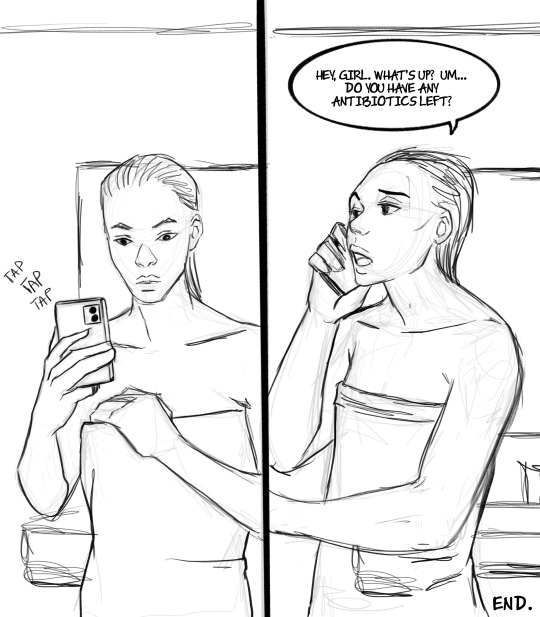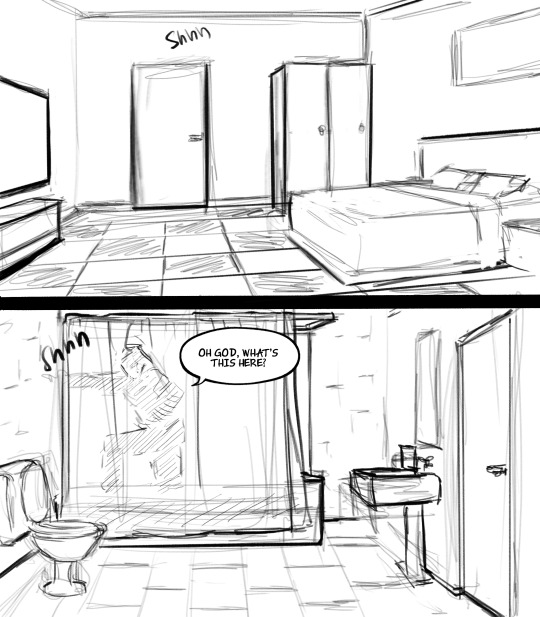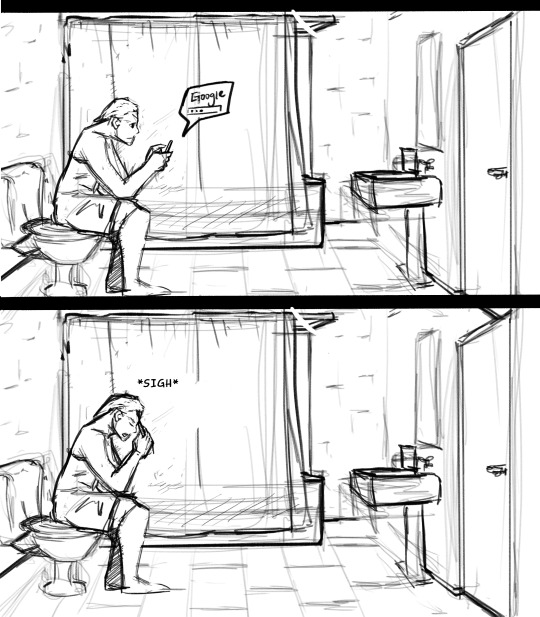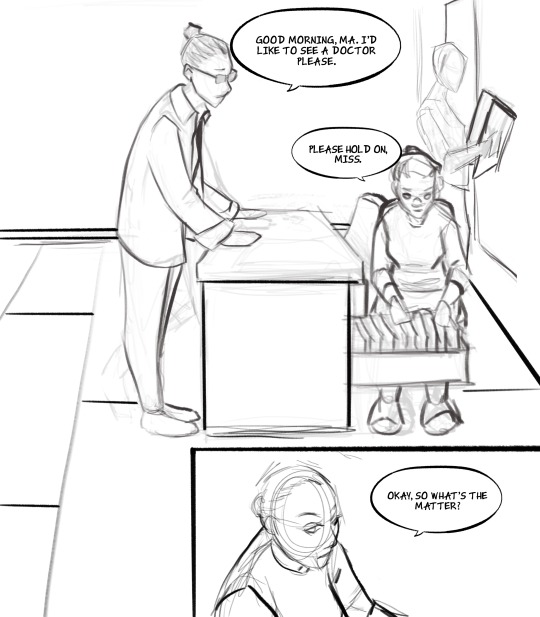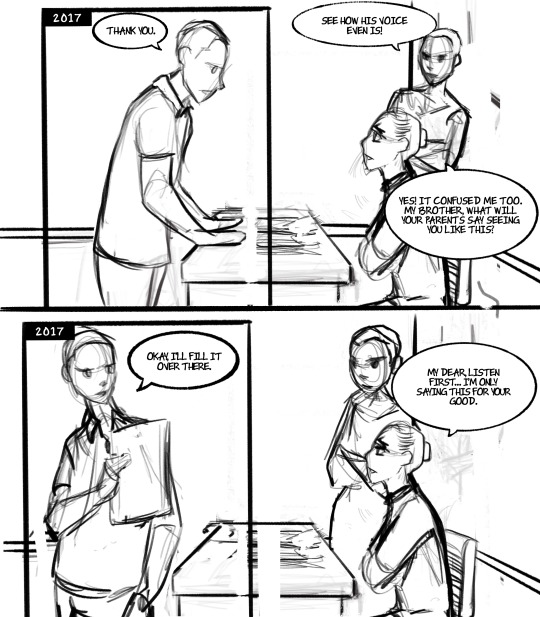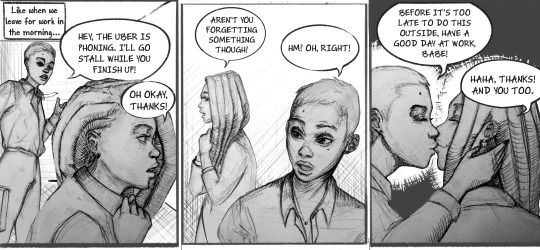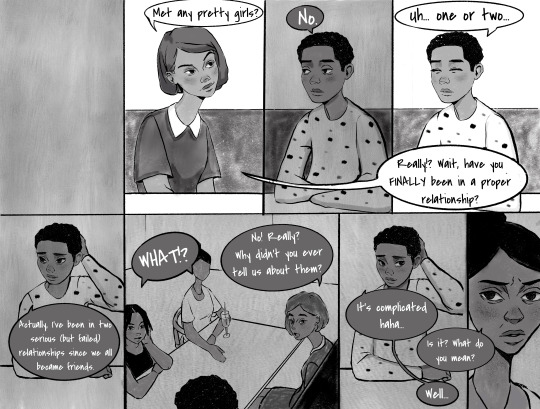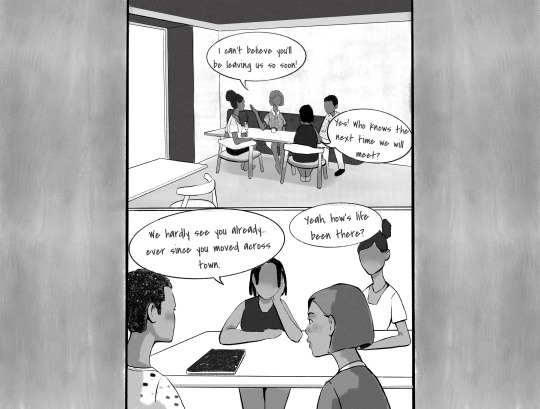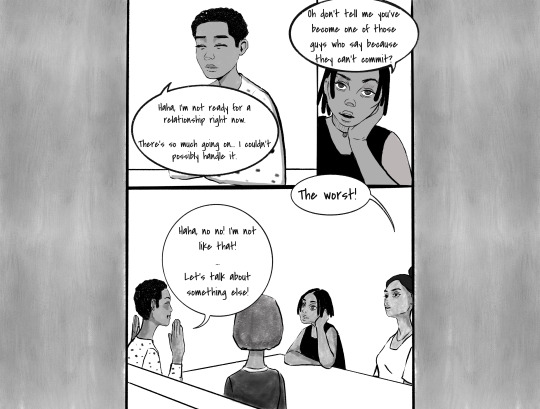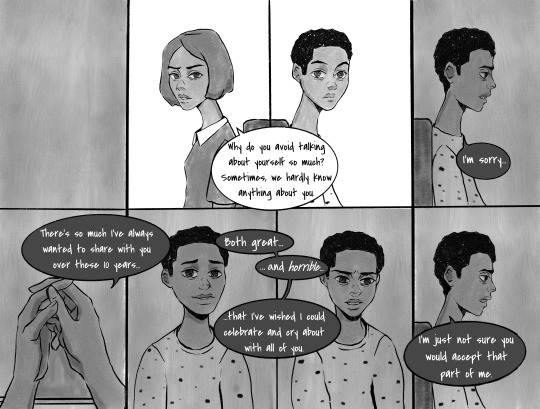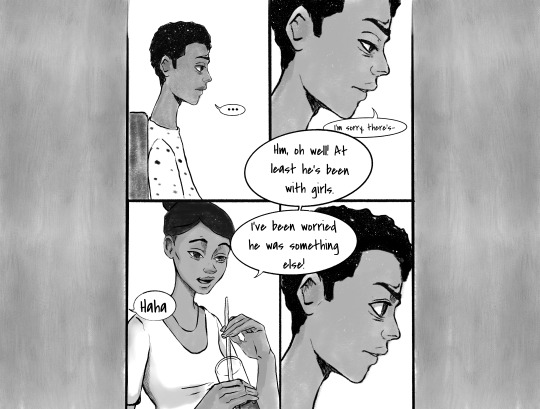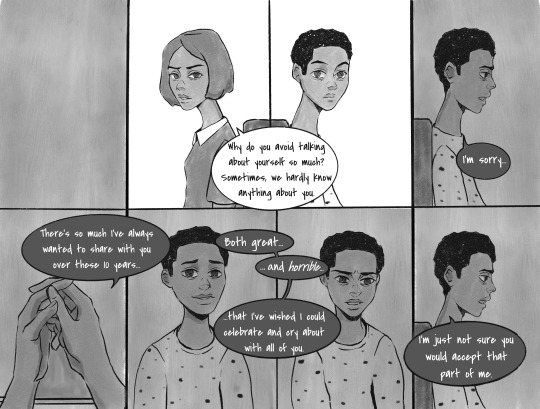Video
0 notes
Text
Methodology
My research on this blog began by reflecting on some of my earlier work and investigating whether some of my thoughts on this were shared with other practitioners or supported by academic views. My approach was to come up with an idea and then search for academic books and peer-reviewed articles to educate myself on the idea and either support or question my theories. Doing this for a while, my research opened new ground for me to discover concepts I was previously unaware of. Some topics I was interested in led to novel ideas for me and areas to research like graphic journalism and para-social interaction.
An overview of my blog reveals a trend in my research to search for how art can contribute to social development. That I am a black person coming from a third world country with regressive laws and insufficient support for certain minority groups, has informed the research I am interested in. I hope to contribute towards the advancement of my country even if by merely a fraction, and so I was interested in seeing how artists who lived in countries with oppressive laws could convey their progressive messages and hopes through their art.
My bias is also shown in some posts like ‘Deceptively Unethical Art’ where I questioned uploading my reflection on an artist’s work because it appeared almost too subjective and triggered many personal feelings. In my search for quality research papers on the subject, I was unsatisfied with some articles I found because they did not express the depth I wished for. I eventually used an interview from a news website that asked the relevant questions I had. My background influenced this choice and in a way, this also showed how my approach changed during this research process because much earlier, I would have given up the topic if I perceived I did not have appropriate academic backing.
My research also demystified a couple of things I wondered about. I had always wondered how illustrators developed concepts in their work to depict the world they create. I now realize it is not always some spark of genius that comes from nowhere. Most innovative artists study subjects they find fascinating and pull on contemporary knowledge to develop ideas. For example, Arthur Rackham borrowed from German folklore and the Victorian era belief of phrenology to inform his fantasy world, and Art Spiegelman could develop the Maus concept through watching olden racially charged cartoons and tying it together with Nazi-era ideology. I have realized that certain depictions cross a line and move towards being controversial rather than framing thoughtful comparisons or metaphors.
For my practice-based research, I came up with some artwork from studying other artist’s work and implementing their ideas to develop my original work. I also used a text I found during my research that helped me carry out a detailed critique of a comic book I purchased. Some artwork I created did not turn out the way I hoped, but creating and observing the final work taught me many things that I will apply towards future projects. I also will continue practicing my critiques to be more concise.
In conclusion, I have recognized useful aspects from my research and learned a lot about what I can apply in my practice. Because I was primarily focused on what I was interested in, some subjectivity was involved in my research process; however, I tried to maintain a level of objectivity in the findings. This research has opened many areas of interest I have merely touched on, both text-based and practice-based. I look forward to expanding on it with the skills I have gained and with the abundance of resources I have access to throughout this Masters study and for the rest of my career.
0 notes
Text
Deceptively Unethical Art
I found it difficult to decide whether to write this blog post, in part because it involves much subjectivity, and my search for academic sources that discuss the artist's work in focus with the depth I wanted was unsuccessful. During my research on art about minority groups, I came across the work of Anton Kannemeyer, a white South African artist. What struck out to me about his work was his use of extreme caricatures of black people made popular in the Jim Crow era, but finding out most of his work was published in the last two decades was what floored me.
This style of art has been referred to as golliwog and coon imagery. I will not be including pictures of his work here or other art in this style in this blog, but I welcome you to search online if you are unfamiliar. I continued studying up Kannemeyer and his work to come to terms with using colonial imagery in the 21st century. Past the surface of racist imagery, I got to understand that his art and comics are supposed to be satirical critiques on racism. They often highlight discrimination, stereotypes black people face, white supremacy, and even white guilt. Notwithstanding, I was still unconvinced this was enough justification for using this imagery
At this point was where I began searching for academic studies on his work. I did not have much luck in finding a critical look at it until I found an essay in the aptly titled book ‘More Critical Approaches to Comics’ (Smith and Duncan, 2020). I purchased this book but discovered that even though his use of golliwog iconography was discussed, the ethics of it were not considered and the focus was mainly on Kannemeyer’s intentions. Researching further, I found an interview online from a South African news website article where he had been asked some pertinent questions I also had.(Nkosi and Hlalethwa, 2020).
“His repeated use of racist tropes; black people depicted as golliwogs; the threat of the black man’s penis; black professionalism are not only offensive, but they also lack the nuance and intellectual rigor that satire demands” (Nkosi and Hlalethwa, 2020)
In this interview, a quote from an older discussion with Griot Magazine was cited where he claimed if he did not use golliwog imagery to depict black people, the message could confuse viewers, and they could mistake the uncaricatured black person for “Hispanic or something else”. Aside from the fact that being Hispanic only has to do with nationality and nothing to do with skin color or race, I find it extremely difficult to believe that satirizing a black person’s body is the only way to communicate that race is the topic of discussion in an art piece. Responding to this quote, he now disagrees that race can only be discussed with racist imagery and that he used the style to parody Herge’s ‘Tintin in the Congo’ for his book ‘Pappa in Afrika’(2010). Even if that were the case, there are other works after his book was published that still make use of the golliwog style.
I believe there are many ways to discuss race without having to use racist imagery. Here are three pieces of art by black artists that are very much discussing race without golliwog iconography or even needing to focus on faces or their bodies

Eliana Rodgers (unknown)- https://www.washingtonpost.com/graphics/2020/lifestyle/black-artists-america-racial-inequality/

Njideka Akunyili Crosby, I Refuse to Be Invisible (2013).
https://news.artnet.com/market/black-artists-to-watch-2016-420296

Hank Willis Thomas, Raise Up (2014). https://news.artnet.com/market/black-artists-to-watch-2016-420296
He has also argued he uses a caricature of white people in his art. These may be ‘caricatures’ but hardly hold weight compared to the historically racist and offensive caricatures he has perpetuated for black people. His depictions of white people are still colored with flesh tones and do not particularly parody Caucasian features. Black people are painted with a stark black color with huge wide mouths, their skin blending into their hair and are usually naked and in sexually explicit forms which all have offensive connotations.
Another anecdote I noted from this interview was when he says with art he attempts “to find a fresh perspective, one that people will find jarring and controversial… and the purpose of my art, when I’m successful, is when artwork has stimulated debate.” He says this, but for me as a viewer, it has been so difficult to look past the imagery to understand what I assume are his well-intentions. I am writing an entire blog due to it after all!
There is a constant argument for free speech and expression and the fear of being censored that Kannemeyer also echoes in this interview. He fears the end of satire. While that may be a topic for debate in other areas, I do not imagine any negative reaction to his work is uncalled-for especially being the product of a white man. Like the authors of the article that interviewed him wrote, I also think his preferred style and approach towards satirizing race issues lack the nuance and intellectual rigor that satire demands.
References
Nkosi, L. and Hlalethwa, Z., 2021. Anton Kannemeyer Says Cancel Culture Is The New Censorship | Arts. [online] Arts. Available at: <https://www.news24.com/arts/culture/anton-kannemeyer-says-cancel-culture-is-the-new-censorship-20200717> [Accessed 17 January 2021].
Smith, M.J., Brown, M. & Duncan, R. 2020;2019;, More Critical Approaches to Comics: Theories and Methods, 1st edn, Routledge, Milton.
0 notes
Text
Entertainment Media and Parasocial Interaction
Throughout my research, I have looked at various ways in which art and comics can pass different kinds of messages. In my career as an illustrator, I want to apply what I have learned and address the issues that I feel educated on, qualified to, or simply experienced enough to discuss. Following how these messages can be conveyed through art, I am also interested in the capability of entertainment media – as my channel of choice – to educate, encourage, and hopefully sway the prejudices of the audience. Is it proven messages via this channel are listened to? Do people take entertainment media seriously enough to form beliefs and attitudes?
Succeeding this line of thought, I came across a term that helped me begin answering my question. This term is ‘Parasocial Interaction’. Schiappa, Gregg, and Hewes (2006) defined “Parasocial interaction” as the phenomenon that happens when viewers form beliefs and attitudes about people they know only through television, regardless of whether such people are fictional characters or real people. Horton and Wahl (1956) described a striking characteristic of entertainment media is it gives the illusion of a face-to-face relationship with the performer”
The notion that contact may lead to more liberal attitudes toward social groups originated in Gordon Allport's book ‘The Nature of Prejudice’ (1954). Allport understood prejudice was formed due to a hasty generalization made about a group with incomplete or mistaken information. He concluded that equal status contact may reduce prejudice between majority and minority groups in the pursuit of common goals. Schiappa, Gregg, and Hewes (2005) postulate the process can be reproduced through mediated contact (through media) which can reduce prejudice, particularly if a majority group member has limited opportunity for interpersonal contact with minority group members.
“A Cliff Huxtable (Bill Cosby), Mary Richards (Mary Tyler Moore), or Ellen Morgan (Ellen DeGeneres) may be able to convey a feel for a person at an emotional level which illustrates that members of social outgroups have more in common with others than initially thought” (Garretson, 2016)

Fig.01 - How Ellen DeGeneres' Historic Coming-Out Episode Changed Television- https://www.biography.com/news/ellen-degeneres-sitcom-coming-out-episode
Along with new information on biology and the involvement of queer people in politics, the portrayal of queer people in news and fictional media has also been identified as a prominent cause of more liberal attitudes towards the global queer community (Garretson, 2016). Schiappa, Gregg, and Hewes (2006) had earlier tested this theory through a study of 245 university students and found correlational evidence consistent with the claim that Parasocial interaction and viewing frequency are causally intertwined with each other in their relationship to levels of sexual prejudice toward gay men. Garretson also carried out an investigation into the topic and found that younger viewers who report higher levels of television viewing actually exhibit greater levels of support for working women, racial minorities and same-sex relations than non-viewers when depictions of recurring sexual minority characters are high.
“By isolating an independent effect of fictional portrayals, this study also suggests that those in positions of control within the entertainment industry can increase public tolerance if they exert the effort to change the images they put before us” (Garretson, 2016). He commends the efforts by those concerned with the rights of minority groups to monitor and influence the entertainment industry as they do not appear to be in vain.
Garretson’s research also touches on the notion that Parasocial effects may vary by birth cohort. Because older people may have already formed strong attitudes toward social groups, both positive and negative, he expects them to be less susceptible to change as compared with younger people (Garretson, 2016). His empirical research amongst other researchers (Pettigrew and Tropp, 2006) confirms that the effects of contact are generally stronger in younger people although leaving a margin of error for likelihoods of young people infrequently expressing social intolerance on these issues.
I know personally a few friends I had in Nigeria that watched shows like Glee and had second thoughts on the image of queer people that had been presented to them all their lives. It is important to note that most of these shows and movies, if not all, are by Western media and thus do not include a Nigerian experience. This has inadvertently pushed an otherworld-ness towards queer people in the country.
Perhaps further research could touch on the question of if national media representation can reduce the prejudices of its citizens more effectively. Nonetheless, I am encouraged by these investigations and wish to make more efforts in addressing these social subjects through my art.
References
Allport, Gordon W. 1954. The Nature of Prejudice. Cambridge, MA: Addison-Wiley.
Ayoub, P.M. & Garretson, J. 2017, "Getting the Message Out: Media Context and Global Changes in Attitudes Toward Homosexuality", Comparative political studies, vol. 50, no. 8, pp. 1055-1085.
Garretson, J., 2015. “Does change in minority and women's representation on television matter?: a 30-year study of television portrayals and social tolerance”. Politics, Groups, and Identities, 3(4), pp.615-632.
Horton, D., and Wohl, R. R. 1956. “Mass Communication and Para-Social Interaction.” Psychiatry 19: 215–229.
Pettigrew, T., Tropp, L., 2006. ”A meta-analytic test of intergroup contact theory”. Journal of Personality and Social Psychology, 90, 751-783.
Schiappa, E., Gregg, P.B. & Hewes, D.E. 2005, "The Parasocial Contact Hypothesis", Communication monographs, vol. 72, no. 1, pp. 92-115
Schiappa, E., Gregg, P.B. & Hewes, D.E. 2006, "Can One TV Show Make a Difference?a Will & Grace and the Parasocial Contact Hypothesis", Journal of homosexuality, vol. 51, no. 4, pp. 15-37.
0 notes
Text
Textures in Digital Art
I have seen more artists I follow online place attention to applying textures to their digital art either with a layer adjustment over the flat painting or using textured brushes to paint. Textures here are like a grainy element on the surface of the artwork that resembles the surfaces of analog art media like textured paper, canvases, wood, etc. From the look of it, one would assume artists who use this textured approach are attempting to replicate the aesthetic of traditional art to appear more ‘authentic’. The circle of artists I’m exposed to in my home country – both digital and traditional artists – places value on traditional art over digital, which may well be the prevalent opinion in other circles. Due to this belief, it could be said that replicating a traditional art aesthetic over digital work could be a way of reaching a similar value. The prevalence of analog textures in contemporary illustration might suggest a movement against the clean digital design paradigm (Stevenson and Stevenson, 2019).
Looking at it from another perspective though, this replication may be used to serve functions separate from merely aesthetic. Observing the work of Adanna Chinonye, a contemporary Nigerian artist who uses textures a great deal in her digital art, shows how this type of ornamental application can be used to express a nostalgic effect by mixing different types of textures and photo adjustments. She uses a paper grain texture on the whole of her self-portrait (Fig. 01) and then elements of decay to the bottom-left corner to evoke the visual of an old developed picture along with subtle use of chromatic aberration to stylize an out of focus effect (which usually signifies an issue with a photographic lens and can be corrected easily in recent times with digital apps, but here, is used to harken back to a time of imperfection).

Fig.01 https://www.instagram.com/p/CKFl2DoDrx2/?igshid=rxngl7dg2fdz
The illustrator who uses texture is making a statement about what they imagine is missing, whether they realize it or not (Stevenson and Stevenson, 2019). Gabrielle Brace Stevenson and Nicholas Stevenson (2019), posit that texture is an ornament with cultural weight. Using analog texture evokes a previous era, complete with its vision of a future, which has not arrived, as we paradoxically continue to look backward.
Stephanie Black (2019) interviewed Harry Tennant and Tom Jay, both contemporary artists who also introduce virtual noise to their images, and both interviewees describe their textural additions as an outcome of their working processes, which were derived in both cases from a love of screen printing developed at the university. They also stated there was a market for illustration appearing like screen printing; its popularity further drove demand for this style. This contrasts with a theory that only the people involved in creating art are the ones that fully appreciate the textures and decorations that they include in their digital pieces. Twemlow (2005), quotes Denise Gonzalez Crisp, who suggests that: ‘It feels like this powerful tool that allows complexity that only craftspeople value’
Even though there is a debate on its usefulness and value applying ornamental analog noise to images reveals a theme of slowing viewers down to enrich their experience of illustration (Stevenson and Stevenson, 2019). I certainly have experienced that; however, if that is solely because I am also an illustrator or the casual viewers of art similarly appreciate it as well is something that should be researched further on and will inform how important it is in illustration
References
Black, S. 2019, "Fibs and fripperies: References to the real in digital illustration", Journal of Illustration, vol. 6, no. 2, pp. 289-304.
Stevenson, G.B. & Stevenson, N. 2019, "Texture: Faking the physical", Journal of Illustration, vol. 6, no. 1, pp. 57-76.
Twemlow, A. 2005, “The decriminalisation of ornament”, Eye Magazine, Winter, http:// www.eyemagazine.com/feature/article/the-decriminalisation-of-ornament-full-text. Accessed 16 January 2020.
0 notes
Text
Comic Books as a Medium and Not a Genre
I remember being an avid reader of comic books when I was younger. The visual narrative of it appealed so much to me and I could not understand why all other books were not in the same format. They would be so much more interesting! Comics and graphic novels provided an engagement to me that ‘text-only’ books lacked. Versaci (2001), explained this notion saying that unlike 'traditional' literature, comic books can literally 'put a human face' on a subject. Comic books blend words and pictures so that, in addition to reading text, readers 'see' the characters through the illustration.
Crutcher (2011) in his article about the complexity of comics cited David Peterson- the creator of Mouse Guard- who put forward the idea that comics are unique to literature and film using texts, fonts, sound elements, images, and more, all to create a unique and sophisticated balance.
If this was how I felt about comics, I wonder why I reduced how much I read them. To be honest, there are many reasons but the most important was I developed the mindset that comics are more juvenile compared to traditional literature. I gravitated towards regular books in my late teenage years, but I continued reading Japanese comics which had a better reputation among adults and I could read them online.
With recent research, I realize I passed the same wrong judgment most people have about comic books by looking at them as a genre and not a medium. Versaci (2001) makes a case for this concept by asking to imagine meeting someone who disdained all film because he was no longer interested in Disney movies and associated all motion pictures with that one narrow genre. When most people hear the term “comics” they usually either think of childish superheroes or funny newspaper strips and dismiss any further potential it can have. The word ‘comics’ presents problems we're still figuring out because the term doesn't settle comfortably into our grammar; nomenclature remains tricky and open to debate (Chute, 2008)
“The use of the term ‘graphic novel’ in Britain and the US has, partly, been an attempt to rescue comics from their critical neglect, as well as to recognize the emergence of specifically adult comics and book-length works, particularly in the last 20 years”. (Frey and Noys 2002). Graphic novels as a term seem to have helped in giving the more grounded work that uses the visual narrative format a platform to be considered for scholarly appreciation and critical attention. A majority of researchers credit Art Spiegelman’s Maus (1986, 1991) as a milestone for the transformation of this medium. This representation of the Holocaust, through the memories of Spiegelman’s survivor father, demonstrated the potential of the form. Frey and Noys (2002), note that Maus has often been treated as a ‘one-off’ that can be safely treated with little debate.

https://www.colorado.edu/honorsjournal/2018/11/07/maus-art-spiegleman-graphic-novel-shows-power-memoir
Since Maus, there have been a couple of other critically acclaimed works like Joe Sacco’s Palestine, Marjane Satrapi’s Persepolis, Alison Bechdel’s Fun Home (Chute, 2008) to name a few. There has also been an increasing cross-cultural translation of the graphic novel, especially from cultures that do not regard it as an illegitimate form. For example, this is true for Japanese manga (comics) and animé (cartoon films) which have found new popularity over the last two decades globally (Freys and Noys, 2002).

https://www.themantle.com/international-affairs/book-review-palestine-joe-sacco

https://www.graphicmedicine.org/comic-reviews/fun-home/
The medium has been undoubtedly been elevated; however, it seems like the legitimacy has been spared for only non-fiction work. Some superhero comic books have been adapted to films and have resulted in 5 of the highest-grossing movies globally. They most certainly should not be ignored or looked down on. Crutcher (2011) also has this train of thought and inquired about the definition and validation of the comics medium, not by focusing on historical or biographical work but through a selection of the Batman comics. He found the creators, artists, and writers of these comics provided a unique complexity not found in prose‐based novels or traditional films. “That complexity came through the (a) medium: the way writers, inkers, colorists, and others involved in the production of a graphic novel impose control, create layering, build atmosphere, and highlight artistic craft; (b) stories: how graphic novels work well beyond the superficial, delving into the human condition, political and cultural subversion, psychology, and the duality of persona; and (c) character: creating and sustaining icons that cross myriad temporal, visual, and setting ranges while paradoxically remaining coherent.”
I recently purchased a couple of X-Men comics (X-Men: Red, Volume 1 and 2 and Phoenix Resurrection: The Return of Jean Grey) and was pleasantly surprised and encouraged by the level of depth the stories carried, the art style, the sequential narrative, and the social commentary that the books encompassed. I did a critical analysis of X-Men: Red volumes earlier in this blog, and my thoughts are in more detail there.
Perhaps the reputational problem comics have had has been the meaning inherent in its name or the assumptions of what its audience should be, but holding on to those notions with so many quality works available and derivatives in other media limit the possibility of experiencing literature that could be life-changing or simply entertaining.
References
Chute, H. (2008). Comics as literature? reading graphic narrative. PMLA : Publications of the Modern Language Association of America, 123(2), 452-465. doi:10.1632/pmla.2008.123.2.452Link
Crutcher, P. A. (2011). Complexity in the comic and graphic novel medium: Inquiry through bestselling batman stories: Complexity in the comic and graphic novel medium. Journal of Popular Culture, 44(1), 53-72. doi:10.1111/j.1540-5931.2010.00819.x
Frey, H. & Noys, B. 2002, "Editorial: History in the graphic novel", Rethinking history, vol. 6, no. 3, pp. 255-260.
Versaci, R. (2001). How comic books can change the way our students see literature: One teacher's perspective. English Journal, 91(2), 61-67. doi:10.2307/822347Link
0 notes
Text
Examining the history of queer comics in the US
As previously mentioned, I am interested in creating graphic novels or comics during my practice as an illustrator. As a Nigerian, I also wish to include Nigerian elements in my comics and social commentary about the state of my home country. I want to comment on the injustices being faced by minority groups in tasteful ways in both metaphorical - like some of my favorite superhero comics- and literal as comic journalism. A particular social injustice I am interested in that the Nigerian government seems unwilling to budge on is its treatment of LGBTQIA+ people.
Considering the laws set in place against LGBTQIA people in Nigeria, a graphic novel about the situation will be controversial. I am intrigued to research how entertainment media (specifically, comics) navigated representing queer issues and topics in other countries that previously had unfavorable laws and attitudes towards queer people but have changed over time
The focus for this post will be the United States of America with a look at the correlation between the developments in the representation of queerness in comics and other mass media and the change in the country’s attitudes towards queer people.
In 1954, major U.S. publishers formed the Comics Magazine Association of America and its censorship arm, the Comics Code Authority (CCA 1954). This has been said to be in response to concerns over the explicit violence and sexual themes in depictions of superheroes (Bramlett, Cook and Meskin, 2016). The sexual themes that seemed queer in these comics were largely sub-textual and highlight the prejudice and paranoia against queer possibilities like what the Nigerian government currently emulates. This act of censorship brought to a halt any subtle references to gender nonconformity and same-sex attraction in mainstream comics.
Because of the restrictions in mainstream publishing, queer comic strips started to appear in underground comics and adult magazines in the 1960s. Chute (2008) talks about the rise of underground comics during this period as a reaction to the censorious content code that debilitated the mainstream industry and describes them as an influential cultural vehicle, challenging and arresting because they meditated on the violation of taboo. According to Murphy (2014), the world’s first gay comic strip was arguably Harry Chess: That Man from A.U.N.T.I.E., (Fig. 01) published from 1965 to ’66. However, other scholars like McGurk (2018), have pointed out earlier presences of queer comics - even though subliminal- like Lucy and Sophie Say Goodbye (Fig. 02) which was published weekly in newspapers in 1905, written and drawn by an unidentified artist. In the same decade as Harry Chess, Tuoko Laaksonen illustrated and released another popular gay comic series titled 'Kake', under the pseudonym, Tom of Finland.
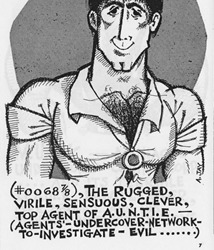
(Fig 01) Harry Chess That Man from A.U.N.T.I.E. https://glreview.org/article/the-lives-and-times-of-harry-chess/

(Fig. 02) Lucy and Sophie Say Goodbye, May 21, 1905. Chicago Tribune.
Unlike Lucy and Sophie Say Goodbye, which could be interpreted as an exaggerated parody of women's social behavior, Harry Chess and Kake were inherently sexual and left little for subtext. Murphy (2014) describes the publication of Harry Chess as a key shift in gay publications and gay politics, and Ajuan Mance in The Routledge Companion to books noted that the explicit sex in strips of the two comics “created both a space and a demand for broader portrayals of gay men’s lives”. (Bramlett, Cook and Meskin, 2016).
To provide context for where the United States was in laws concerning queer rights in the ’60s, Illinois had just become the first U.S. state to decriminalize homosexuality by repealing its sodomy laws, and several milestone protests including the Stonewall Riot occurred during the decade The Supreme Court had also ruled in favor of an LGBT magazine when a suit was filed against them after the U.S. Postal Service and FBI declared the magazine obscene material. (Milestones in the American Gay Rights Movement | American Experience | PBS, 2021). There had been little progress in legal rights compared to the country’s present status, but queer Americans were visibly fighting for them.
The late 1970s and early 1980s saw the next wave of queer comics like Wendel, It’s a Gay Life, Leonard and Larry, Poppers and Chelsea Boys, which were all published in gay magazines. These comics reflected their primarily gay male readership in that the characters “attended gay pride celebrations, shopped at LGBTQ bookstores, and responded to the AIDS crisis, the Defense of Marriage Act (DOMA), and Don’t Ask/Don’t Tell, all while falling in and out of love.” (Bramlett, Cook and Meskin, 2016).
It was not until about 28 years later in Marvel’s Captain America Vol. 1 #270 (1982) that either of the large mainstream comics publishers (Marvel and DC) featured a story-line depicting queer or trans characters (Bramlett, Cook and Meskin, 2016). In this issue, Captain America helps his childhood best friend, Arnie, by rescuing Arnie’s close friend, Michael. Through subtext, it seemed to become clear to Captain America that Arnie and Michael were, in fact, a couple. (https://marvel.fandom.com/wiki/Captain_America_Vol_1_270).

(Fig. 03) Cover of Marvel’s Captain America Vol. 1 #270 (1982)(https://marvel.fandom.com/wiki/Captain_America_Vol_1_270).
Throughout the 1980s, more queer characters were depicted, although indirectly and still with subtext like Captain America’s Arnie. The CCA, in response to the greater inclusion of LGBTQ characters and themes in the film and other popular media forms, revised its Code to lift its prohibitions against queer characters and content. CCA-approved comics however were to avoid the graphic depiction of “sexual activity” and that depictions of adult relationships, “be presented with good taste, sensitivity, and in a manner, which will be acceptable by a mass audience” (CCA 1989).
Over the years to date, DC and Marvel have introduced characters explicitly stating their orientation, including Northstar, an X-Men character; members of The Runaways and the Young Avengers; and notably Batwoman, who came out as a lesbian. The popular Archie Comics in 2010 introduced a gay character named Kevin Keller (Fig. 04) who eventually had his spinoff comic in 2012. Ajuan Mance noted the debut of Kevin Keller as queer attracted a higher level of attention than any Marvel or DC character (Bramlett, Cook and Meskin, 2016). In 2014, Kelvin Keller got married to his spouse in the Life with Archie series (Fig. 05) a few years after New York and other US states legalized same-sex marriage and a year before the Supreme Court declared same-sex marriage legal.
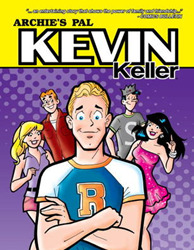
(Fig. 04) https://www.goodreads.com/book/show/11661956-kevin-keller
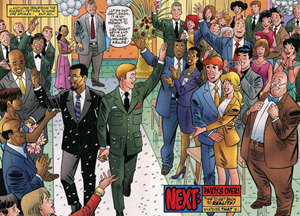
(Fig. 05) https://womenwriteaboutcomics.com/2019/06/the-wedding-issue-pride-edition-kevin-keller-and-clay-walker/
Taking this study for use in the Nigerian context can be applied in different ways. In the US, when the laws were restrictive and limiting towards queer content, the creators of comics and graphic novels under mainstream publishers had to operate in line with the laws. The creators could merely represent queer people through subtext. Unambiguous representation was only viewed through underground magazines from the ’60s up to the ’80s. In today’s age, Nigeria still has comparable, if not more regressive laws, but the Internet provides a similar and arguably better platform than the 20th century underground comics did.
The ease of access and ability to self-publish can cut out the publishing middleman, and I can illustrate distribute the stories I want via the Internet and social media platforms. Of course, if I am fortunate to secure a publishing deal for other ideas I have, I can employ subtext to include queer elements.
I will carry out more research on the best ways to present these proposed comics. Do I go in the explicit and sexually charged direction like Harry Chess and Kake to show a boldness and an unapologetic display of Nigerian queerness? Do I go the route of illustrating average Nigerian queer people to reflect their humanity hopefully to convince prejudiced people that queerness is not an abnormality? Or do I represent queerness in my comics for the Nigerian queer people to identify themselves in the media? These questions relate to the audience I want to reach because they will inform the content I want to create.
References
Bramlett, F., Cook, R. and Meskin, A., 2016, The Routledge Companion To Comics, Taylor & Francis Group.
Chute, H. 2008, "Comics as Literature? Reading Graphic Narrative", PMLA : Publications of the Modern Language Association of America, vol. 123, no. 2, pp. 452-465.
McGurk, C., 2018, Lovers, enemies, and friends: The complex and coded early history of lesbian comic strip characters, Journal of Lesbian Studies, 22:4, 336-353, DOI: 10.1080/10894160.2018.1449502
Murphy, M., 2014, The Lives and Times of Harry Chess, The Gay & Lesbian Review , 21(2): 22– 24.
Pbs.org. 2021. Milestones In The American Gay Rights Movement | American Experience | PBS. [online] Available at: <https://www.pbs.org/wgbh/americanexperience/features/stonewall-milestones-american-gay-rights-movement/> [Accessed 12 January 2021].
25 notes
·
View notes
Text
Critical analysis of a Comic book
During my search for books and articles to aid my practice-based research, I came across the text “Critical Approaches to Comics: Theories and Methods”. This book offers a look into the critical analysis of books and the theories and methods their authors employ. It focuses on four essential aspects of a graphic novel/comic which are: Form, Content, Production, and Reception. In each of these parts, contributors with comic criticism expertise discuss their methods of analysis and put into practice these methods on selected comics or graphic novels.
It is an insightful book and going through it made me understand different ways a comic could be analyzed and further understood. I had recently purchased a comic book called X-Men Red (Fig. 01) and wanted to try out the procedures that some critics had employed in their analysis.
Peter Coogan in Chapter 15 Genre: Reconstructing the Superhero in All Star Superman, discusses the superhero genre and its characteristics. He offers a guide towards analyzing the superhero comic book and its context. His procedures entail multiple readings to properly critically analyze.
First reading: Familiarize yourself with the events and characters of the story.
Second reading: engage with the text at a deeper level, note the conventions (heroes, villains, love interests, etc.). Note how are they used; seriously or comically or problematically? Observe structural pairs (events, characters, icons, and settings) that reflect and comment on each other.
Third reading: attend to the sequential artistry of the comic book.
After these three, the analyst should assemble their notes and try to identify patterns in the story, using conventions, and the sequential artistry that leads to discovering the thematic concerns of the authors.
He mentions that superhero comics are usually intertextual in that they reference other texts and those should be watched out for. He also says to consider the general tendencies of comic books produced at the time the text you are analyzing was published.
Lastly, it should be noted how the characters represent oppositional attitudes (both semantically and syntactically) and how these oppositions are mediated. Then determine what you have to say about the story and how the text supports and reveals the points you want to affect.
(Smith and Duncan, 2012)

Fig. 01 Cover of Taylor, T., Alixe, P., Lee, S., Kirby, J. and Asrar, M., 2018. “X-Men Red - The Hate Machine”. New York: Marvel Worldwide.
After three readings and making notes, I assembled this analysis on two chapters of X-Men Red (1 and 2).
The comic starts with a one-page introduction of Jean Grey back into the comic universe, back from the dead. It’s a sequel to her actual resurrection chapter, but this first page helps bring the reader to speed with synoptic text and imagery (Fig.02). “I was the Phoenix”, “I burned so brightly”, “And then I was dead”, “And everything was dark”, “I’m alive again”. She is pictured in the last panel of the page recollecting this and reflecting on the events straight after her resurrection.
Jean’s death as the Phoenix is a famous story in the X-Men universe, and just last year, a second live-action movie adaptation was released in theaters worldwide. The first was released in 2006 and there have been many adaptations in comics and animated programs over the decades since the story of her death was first introduced in 1980.

Fig. 02- Excerpt from Taylor, T., Alixe, P., Lee, S., Kirby, J. and Asrar, M., 2018. “X-Men Red - The Hate Machine”. New York: Marvel Worldwide.
From the first page to the following pages of this chapter, Jean acts as the narrator of the events that happened just before she died, and after she came back to life. This is done through green text boxes in the chapter. She catches up with the rest of the X-Men team, and we watch her move from here with her blue-skinned teammate Kurt, to another setting where we get the first glimpse of intolerance towards mutants that will be the focus of this story. Kurt is the target of discrimination by a passer-by and through this, we also get to see a glimpse of Jean Grey’s strength as she deals with this situation. It is revealed throughout the book that Jean can use her powers to its extent without fear of the Phoenix entity taking hold. The extent is yet unknown to her, but she knows she was being held back before.
This theme of intolerance towards mutants (people with abnormal abilities and sometimes appearances) is a topic frequently explored by the X-Men franchise more popularly and taken more seriously compared to any other comic in the superhero genre in my opinion. The seriousness is similarly conveyed in this comic book.
There are similarities in the discrimination mutants face with what minorities in our real world go through. In this instance with Kurt and Jean, it is indirectly shown that even though they are both mutants; Kurt is singled out by a normal white-passing man because he outwardly presents to be different with his blue skin and long tail while Jean is overlooked because she appears like a normal human. Likewise, in the real world, the more obvious your difference is, the more bigotry you are likely to face. Darker skin, non-Eurocentric features, gender-queer appearances, disabilities, etc.
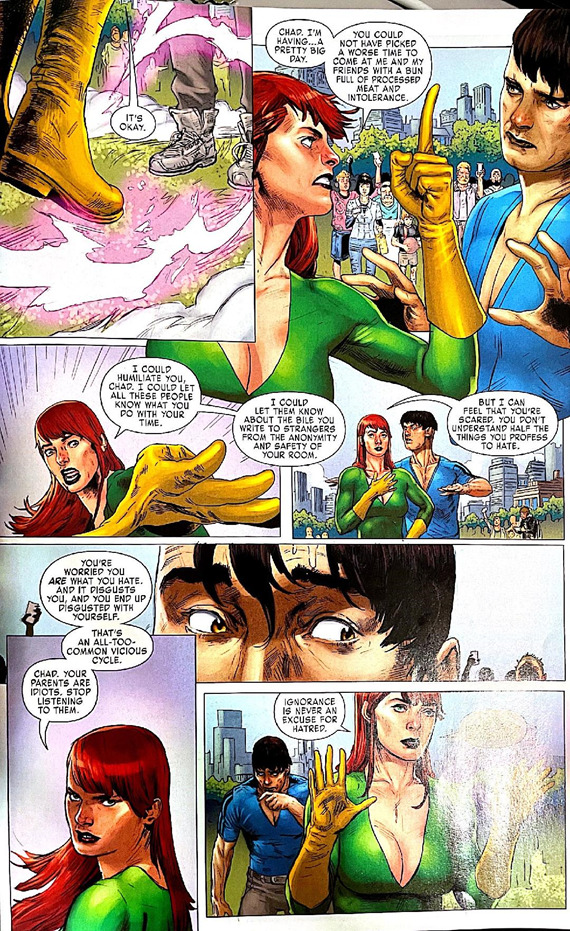
Fig. 03- Excerpt from Taylor, T., Alixe, P., Lee, S., Kirby, J. and Asrar, M., 2018. “X-Men Red - The Hate Machine”. New York: Marvel Worldwide.
It is obvious Kurt faces this all the time, and he seems to brush it off, but Jean is coming back into this world as sort of fresh-eyed and is appalled the hatred has become more emboldened since she had been gone. It is an added effect she is a mind-reader and reveals the hateful man is scared and does not understand half of the things he professes to hate, which is a common belief about bigots. She also alludes he is among the infamous internet trolls that write bile to strangers from the anonymity and safety of his room. It is fair to say that the “internet troll” in recent times is one of the most prominent social bullies. This man is a clear representative of today’s social and digital hate culture
The first chapter concludes by panning back to the image of Jean in the setting of the first page’s panel, narrating the story of her coming back to life and what she has faced so far. It is from here and the following chapters that the story moves into the present. Jean says that with her new life she will ensure to change this hateful world.
The art of this chapter is a bit unusual to me. It tends to be abrasive. I haven’t paid much attention to western comics recently so that might be a factor in my unease. The artist Pascal Alixe uses short dark lines that don’t flow together for shading and this gives the character’s faces and bodies a rough appearance. The art also doesn’t follow the regular pin-up styles for female characters that comics are famous for. They appear stockier and more muscular than the typical comic representation which, realistically, makes sense for the jobs they take on.
In chapter 2, since Jean has been revealed to be a strong mutant, and we are following her quest to save the world, it is curious to witness how she goes about it. A fascinating way she does this is by using her telepathy to link the brilliant minds of others to solve a specific problem. She does this when she invites distinguished thinkers from all over the world for a meeting and links their minds with her powers to develop an idea to make the world better. She pulls a similar feat later in the comic when she uses Black Panther’s neurological knowledge and the powers of Trinary, a new teammate, to remove an item from a person’s brain. Doing this passes across the message that complicated problems can be solved by bringing together the skills and talents of different people. A telepath might not be realistic, but someone with empathy and good interpersonal skills may achieve this.
In a United Nations meeting, Jean pleaded her case to the world ambassadors. Referencing Professor Xavier’s intent for ‘mutantkind’ – who believed mutants could win normal humans over by being heroes when needed and being invisible when not – she says mutants should not need to be heroes for acceptance. This is a fascinating sentiment as she (or rather the author) could be referencing other superheroes in the superhero genre and the terms of being accepted. This calls upon the intertextuality of the superhero genre. Superman, Spiderman, and other heroes with powers have often had complications with public acceptance until they proved they are useful to society by using those superhuman powers to save their citizens. This also translates to real-world issues. For example, how black people often need to be exceptional before they are thought of separately from stereotypes.
In an examination into ‘homo-normativity’ in children’s literature, Lester (2013) posits that in most queer literature for children, there is an emphasis on the queer or gender non-conforming character to earn approval as opposed to being entitled to it. She states in the article that “This motif of having to prove oneself means the main characters are accepted only after those around them learn to appreciate their differences, the implication being that there is ultimately something unacceptable about gender nonconformity for which young male characters must compensate”… “These cases of privileging individual exceptionalism as the only way of gaining acceptance still maintain that gender nonconformity is unacceptable and should be avoided”.

Fig. 04 - Excerpt from Taylor, T., Alixe, P., Lee, S., Kirby, J. and Asrar, M., 2018. “X-Men Red - The Hate Machine”. New York: Marvel Worldwide.
Unfortunately, this chapter ends with Jean being framed for the murder of an attending ambassador by the villain of the story, Cassandra Nova. Even though Jean had made some progress during the meeting, the situation has now become worse than before as it is publicly witnessed a mutant has murdered someone that appeared to have opposed her. Before the frame job, a message from Nova was passed to Jean informing her that she had upset the status quo with her actions and would face the consequences. Taking this back to the real world, this alludes to what many social activists and minorities discern, which is that systems have been put in place to ensure that the oppressed remain oppressed for the benefit of the oppressors.
In the subsequent chapters, the story develops further; however, it is noticeably told from an intriguing point of view. More common superhero stories find their heroes playing a more passive role. They live their lives until an accident happens nearby or a super-villain wants to take over the world or rob a bank before they act. In X-Men Red, Jean could have waited for the anti-mutant tensions to rise and actual conflict to ensue before she acted, but she takes on an assertive role and is seeking to achieve a goal and is now being thwarted by the villains.
I researched on remarks from the author, Tom Taylor, about the comic, and he states “this book is Jean Grey coming back to life, but not coming back to the life she left behind. She doesn't want to come back to that life either. She's seen that the world has moved on. It's changed and she doesn't like everything she's seen. She's very empathetic and she feels so much of what's going on around her that she wants to make an actual change to the world. Not just for ‘mutantkind’ or humanity, but for everybody”. He doesn’t out-rightly mention the subliminal social commentary and that is likely because it speaks for itself and is not heavily nuanced.
I find this book pertinent to current times and it is thought-provoking without losing too much on the entertainment factor. As a consumer of superhero entertainment, it is usually difficult for me to grasp how a really powerful protagonist can lead an engaging story, but when faced with the seemingly insurmountable problem of bigotry, discrimination, and changing the hearts of people, it is a worthy challenge and I can’t wait to see how it culminates.
This has been an insightful task for me and the text that assisted my analysis has expanded my outlook on comics and the different facets of it that I never paid attention to. This will undoubtedly help me in my practice to be more intentional about the choices I make in the comics I create in the future.
References
Lester, J.Z. 2014, "Homonormativity in Children's Literature: An Intersectional Analysis of Queer-Themed Picture Books", Journal of LGBT youth, vol. 11, no. 3, pp. 244-275.
Smith, M.J. & Duncan, R. 2012;2011;, Critical Approaches to Comics: Theories and Methods, Taylor and Francis, Hoboken.
Taylor, T., Alixe, P., Lee, S., Kirby, J. and Asrar, M., 2018. “X-Men Red - The Hate Machine”. New York: Marvel Worldwide.
4 notes
·
View notes
Text
From Purple Orchid to Pink Rose
Following drawing other artist’s works and putting my own spin on it, another way to improve my art that I wish to include in practice is; observing other artist’s workflow and learning from their inspirations, concepts and processes. A book I have come across to help with this is Digital Masters by 3D Total.com. This book focuses on digital art which is the medium I use the most in my practice.
The book has various digital art ‘masters’ revealing the processes behind selected work of theirs. These masters include 3D and 2D artists with different styles and aesthetics of drawing, painting and rendering. Although this book was published in 2008 and there have been a lot of technological advances in the world of digital art that may make some of the processes described here obsolete, there is a lot of useful information to be gotten from the artists’ concepts and inspirations.
Since my art tends to focus more on characters and portraits in 2D, I decided to look for an artist in the book that also had the same focus. It will be worth studying the processes of artists that create work I’m not too familiar with in the future.
I settled on artist Drazenka Kimpel’s work ‘Purple Orchid’ (Fig.01). She painted what seems like a fantasy character in a very low-cut dress and a collar inspired by an orchid. In her concept description, she mentioned flowers have always been an inspirational force behind her art and that the intricate design of Mother Nature influences her creativity.
She also mentions something interesting in that she had a specific type of orchid- the ghost orchid- as the source of inspiration and she would have gone to the area where this orchid grows to study it directly if the trip to it was less difficult. This piqued my interest because I have always used the internet to source for references of any object to aid my art. I have never really bothered getting them physically for a closer look; however, this is something I think I will pay more attention to because there just might be some advantages to it.

Fig. 01- Purple Orchid
Her workflow begins with a solid sketch on paper supported by as many reference pictures and some of these are shown to be pictures of orchids. She does not mention how she came up with the outfit of the character aside from the orchid-like collar, but it appears to be an idea she had sifting, and it is complimentary to the rest of the painting.
For mine, I decide to follow similar choices she makes. I still decide to use the internet for pictures of flowers for references because I want something unusual. I settle for a rose which is a pretty common idea, but this rose had colours and a pattern I found very appealing and could be used well for a painting (Fig. 02). She mentions she had a pretty good picture in her head for the colour choices of her painting so using the rose’s colours will help me for this part. I redrew it and changed the colours a little (Fig. 03).

Fig. 02 https://www.youtube.com/watch?v=ZnoLXxAN9cY&ab_channel=KaushikBasu
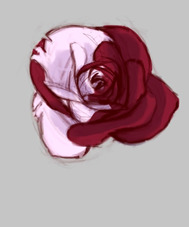
Fig. 03 -Sketch of the rose
Incorporating the flower into the outfit of my character was a bit of a challenge(Fig 04). I went through several options until I landed on an idea (Fig.05) loosely based on an elaborate take on a piece of Nigerian traditional headwear.

Fig.04- Initial sketches

Fig.05 Final sketch of my painting

Fig.06 – Pose reference- https://www.pinterest.com/pin/520799144416146561/
For the rest of the outfit of my character and her pose, I went through Pinterest and Instagram to get some inspiration and mixed a bunch of ideas to arrive at what I have. I also looked out for a pose that had the person holding flowers to relate more to Kimpel’s work (Fig. 06).
Kimpel goes into detail about the composition of her painting and shows how she repositioned aspects of the painting, for example, her character was not originally interacting with the environment with her hand until much later during the painting. She didn’t sketch it out again but made the adjustments directly on the painting. I also made an adjustment to the headwear later on during my own painting process (Fig. 07).
I followed some of her processes loosely and incorporate my stylism to my painting. In hindsight, I wish I paid more attention to some of her process, particularly how she constructed the belt of her character by referencing a photo of an oriental piece of metal fencing. This could have been used for the rose pendant on the forehead of my character to make it more intricate.
Overall, I am happy with how my piece turned out. It was not an easy task for me to use someone else’s inspiration to come up with my own artwork but I learnt a lot during the process and will most likely try it out again in the near future.

Fig. 07 -Final version of my drawing (Pink Rose)- https://www.instagram.com/p/CJRxg_NFF06/?igshid=lcf9md2g6b7w
References
3D, T 2008, “Digital Art Masters”, Taylor & Francis Group, Abingdon, Oxon. Available from: ProQuest Ebook Central. [26 December 2020].
0 notes








